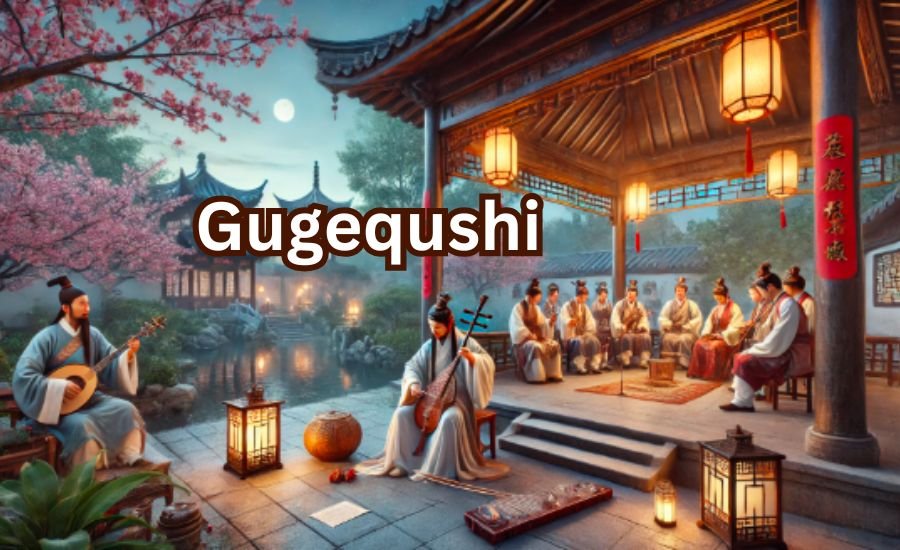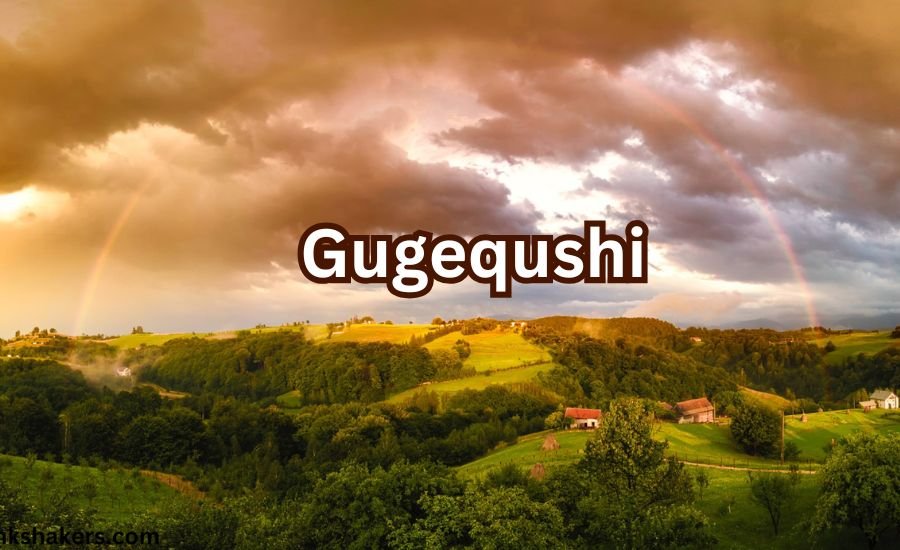Gugequshi is a term that sparks curiosity, weaving together history, culture, and storytelling into a mesmerizing experience. Whether you’re hearing about Gugequshi for the first time or have encountered its essence in traditional narratives, this unique concept holds a deep significance in artistic expression. But what exactly is Gugequshi, and why has it gained attention in recent times?
Rooted in ancient storytelling traditions, Gugequshi blends words, emotions, and music to create immersive tales that captivate audiences. Over centuries, it has evolved from an oral tradition to a multi-dimensional art form, influencing modern literature, theater, and even digital storytelling. At Cat Meme, we explore the deep history and cultural significance of Gugequshi, uncovering how it continues to shape narratives today.
What is Gugequshi? Understanding Its Meaning and Origins
Gugequshi is a fascinating term with deep roots in storytelling. It represents a unique way of sharing tales that connect people across generations. Over time, Gugequshi has evolved, blending old traditions with modern influences to keep the art of storytelling alive.
The origins of Gugequshi trace back to ancient times when people used stories to teach, entertain, and preserve history. These stories were often passed down through spoken word, allowing cultures to maintain their traditions. Today, Gugequshi continues to inspire writers, artists, and storytellers worldwide.
As storytelling changed, so did Gugequshi. From oral traditions to written texts and digital platforms, it has adapted to new formats. Despite these changes, its core purpose remains the same—bringing people together through powerful narratives.
The Cultural Impact of Gugequshi: A Timeless Storytelling Tradition
Storytelling has always played a vital role in shaping cultures. Gugequshi is no exception, as it has been a medium for expressing emotions, sharing knowledge, and keeping heritage alive. Many societies have relied on this form of storytelling to teach values and lessons.
Throughout history, Gugequshi has influenced literature, theater, and even film. Its ability to create strong emotional connections makes it a valuable tool for preserving history and passing down wisdom. People remember stories better when they are told with emotion and depth.
Modern culture still embraces Gugequshi through books, movies, and online content. This proves that storytelling remains a powerful force in human life. It helps people understand different perspectives, making it an essential part of communication and learning.
How Gugequshi Has Evolved in the Modern World
In today’s fast-changing world, Gugequshi has taken on new forms. Technology has transformed storytelling, making it accessible to a global audience. From books to digital media, stories are now shared in ways that were once unimaginable.
Social media and video platforms allow people to experience Gugequshi in interactive ways. Short videos, podcasts, and blogs have become popular storytelling methods. These new formats keep audiences engaged and interested.
Despite these advancements, traditional storytelling remains important. Many writers and artists still incorporate Gugequshi into their work, blending old and new styles to create meaningful content. This shows how storytelling continues to thrive in different formats.
Exploring the Unique Elements That Make Gugequshi Stand Out
What makes Gugequshi special is its ability to connect people through emotions and experiences. Unlike ordinary stories, it often includes deep meanings, symbolic messages, and thought-provoking themes. These elements make it an unforgettable storytelling style.
A strong narrative structure is another key feature of Gugequshi. Stories are carefully crafted to keep audiences engaged from beginning to end. Whether written, spoken, or performed, they have a rhythm that captures attention.
The combination of history, culture, and creativity sets Gugequshi apart from other storytelling traditions. Each tale carries a unique essence, making it valuable for both Entertainment and education. This blend of elements keeps it relevant across generations.
Gugequshi and Oral Storytelling: A Connection Through Time

Long before books and digital media, oral storytelling was the primary way of sharing knowledge. Gugequshi has strong ties to this tradition, as it began as spoken stories passed down through generations. These tales were told with great detail and emotion, making them memorable.
Storytellers played an important role in communities, using Gugequshi to entertain and educate. They would use voice modulation, expressions, and gestures to bring stories to life. This made the experience engaging for listeners.
Even today, oral storytelling remains significant. Many cultures still pass down stories through spoken word, keeping the essence of Gugequshi alive. Podcasts, audiobooks, and live performances continue this ancient tradition in modern ways.
The Role of Music and Emotion in Gugequshi Narratives
Music and emotion play a crucial role in Gugequshi, adding depth and meaning to the stories. In many traditional settings, music was used to enhance the storytelling experience, making it more immersive and engaging.
Emotions help create strong connections between the storyteller and the audience. A well-told story can make people feel joy, sadness, excitement, or fear. This emotional bond keeps the audience invested in the narrative.
Even in modern times, music and emotion continue to shape storytelling. Movies, theater, and even social media content use these elements to create powerful experiences. This shows that the principles of Gugequshi remain relevant today.
Famous Gugequshi Tales That Have Stood the Test of Time
Over the years, many Gugequshi stories have become legendary. These tales often carry deep messages and have been passed down through generations. Some of them focus on heroism, love, wisdom, or even moral lessons.
One of the key reasons these stories remain popular is their timeless themes. They speak to human emotions and experiences that never change, making them relatable even in different eras. Their lessons continue to inspire people across cultures.
Modern adaptations of these stories appear in books, movies, and theater. This proves that Gugequshi tales are not just historical artifacts but living pieces of culture that evolve with time. Their influence is still strong today.
Why Gugequshi is Gaining Popularity in Digital Media
With the rise of digital media, storytelling has taken a new direction. Gugequshi has found a place in online platforms, where it reaches wider audiences through videos, blogs, and podcasts. The internet has given storytelling a global stage.
Social media has made it easier for storytellers to share Gugequshi tales instantly. Platforms like YouTube, TikTok, and Instagram allow people to present engaging narratives with visuals, music, and interactive elements.
As digital content continues to grow, Gugequshi storytelling adapts to new trends. Short-form videos, animations, and even virtual reality experiences are now part of modern storytelling. This ensures that Gugequshi remains relevant in a fast-changing world.
How Gugequshi Preserves Cultural Heritage and Folklore

One of the most important roles of Gugequshi is preserving cultural heritage. Stories serve as a bridge between generations, ensuring that traditions, values, and history are not lost over time. They help people stay connected to their roots.
Folklore and myths are often passed down through storytelling. Gugequshi has helped keep these stories alive, allowing cultures to maintain their unique identity. Many of these tales reflect the beliefs and customs of different communities.
Through books, films, and digital content, Gugequshi continues to protect and celebrate cultural heritage. As long as these stories are shared, they will remain an important part of human history, keeping traditions alive for future generations.
Conclusion
Gugequshi is more than just storytelling—it is a way to connect people, share wisdom, and keep history alive. From ancient oral stories to modern digital content, it has changed over time but still holds its true meaning. Whether through books, music, or online videos, Gugequshi continues to bring joy and knowledge to people all over the world.
As technology grows, Gugequshi will keep finding new ways to reach audiences. No matter how stories are told, their power to teach, entertain, and inspire will never fade. By keeping this tradition alive, we help preserve culture and pass down important lessons for future generations.
FAQs
Q: What is Gugequshi?
A: Gugequshi is a storytelling tradition that shares meaningful stories, often passed down through generations.
Q: Where did Gugequshi originate?
A: It has roots in ancient cultures and has evolved over time, adapting to modern storytelling methods.
Q: Why is Gugequshi important?
A: It helps preserve cultural heritage, teaches life lessons, and connects people through shared experiences.
Q: How has Gugequshi changed in modern times?
A: Today, it is shared through books, music, videos, and digital platforms, making it more accessible worldwide.
Q: What makes Gugequshi different from other storytelling traditions?
A: It blends emotions, history, and creativity, making stories more engaging and meaningful.
Q: Can anyone create Gugequshi stories?
A: Yes! Anyone can share stories inspired by this tradition, keeping the art of storytelling alive.
Q: How does Gugequshi impact digital media?
A: Many creators use it in blogs, videos, and podcasts to share engaging content with wider audiences.
Q: Are Gugequshi stories only for entertainment?
A: No, they also teach moral values, inspire creativity, and help people understand different cultures.
Q: Is Gugequshi still popular today?
A: Yes! Its storytelling style is loved by many and continues to grow in digital and traditional formats.
Q: How can I learn more about Gugequshi?
A: You can read books, explore online content, or listen to traditional storytellers who share Gugequshi tales.
